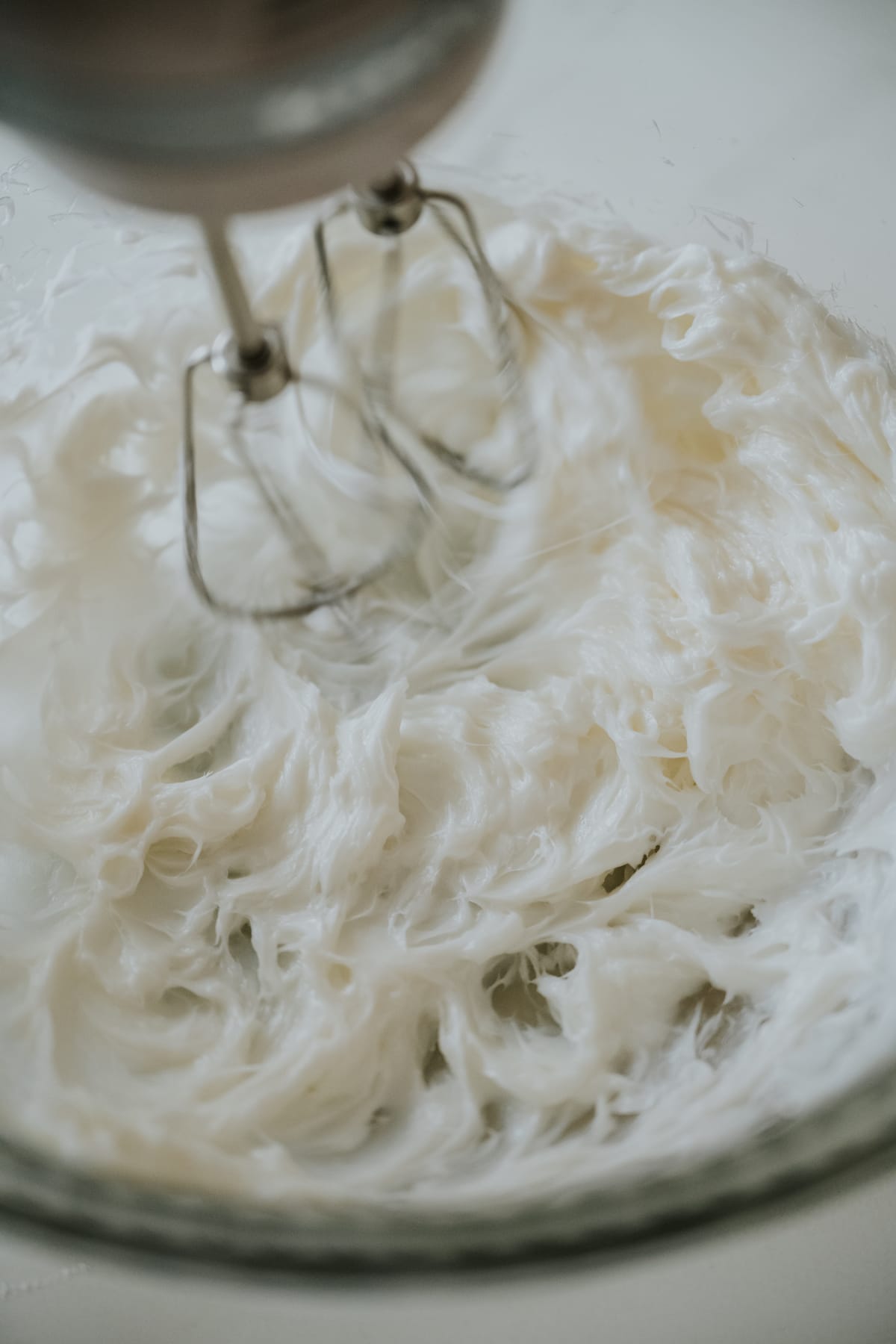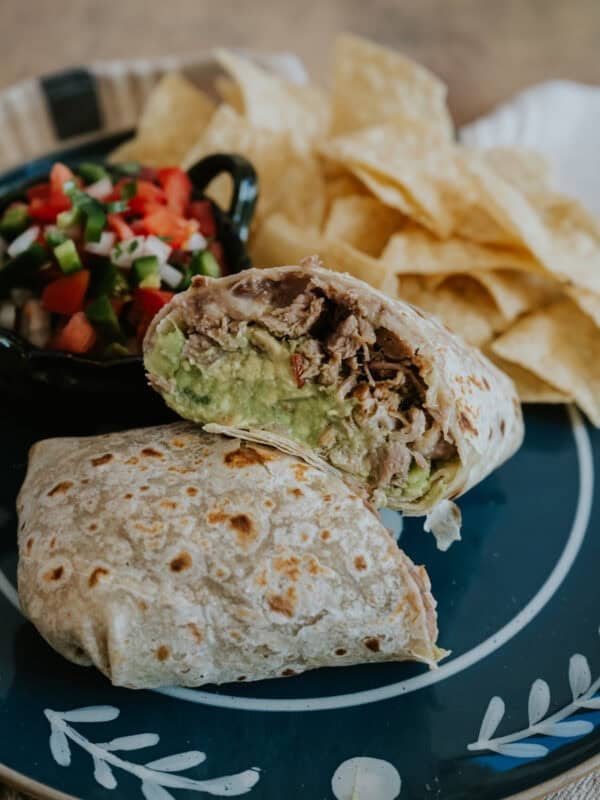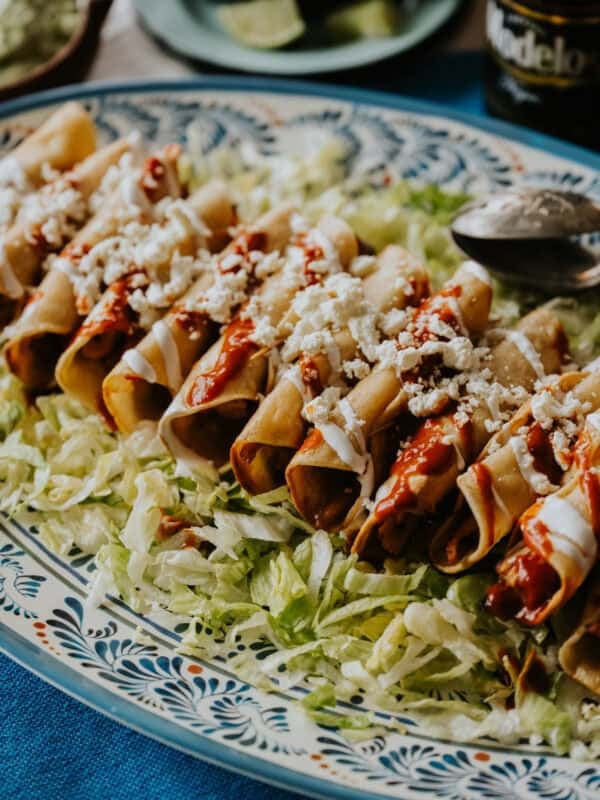Tamales with Masa Harina (Masa Dough Made with Masa Harina)
33
Updated Mar 04, 2025, Published Dec 19, 2018
This post may contain affiliate links. Please read our disclosure policy.
Not everyone has the luxury of finding fresh ground corn masa, but that shouldn’t stop you from indulging in homemade tamales. Enter my versatile and easy recipe for Tamales with Masa Harina. This readily available alternative brings the authentic taste of nixtamalized corn to your pantry shelves, meaning traditional Mexican meals are never far from reach.

Made from just 5 simple ingredients, this simple recipe for masa para tamales is a snap to whip up. Better yet, it can be used for both savory and sweet tamales, meaning this masa dough made with masa harina will open a whole world of flavorful possibilities. As if that weren’t enough to love, it’s also easily scalable — one batch makes a dozen tamales, but you’re welcome to double, triple, or quadruple the recipe as needed.

What is Masa Harina?
If you have the Muy Bueno cookbook or are a longtime reader of my blog you know that I generally recommend purchasing fresh ground corn (unprepared masa) from a tortilleria (tortilla factory) or Latin supermarket to make my favorite authentic tamales made with fresh ground unprepared corn dough. That said, I know not everyone has easy access to this ingredient. The best substitute? My favorite pantry powerhouse: masa harina flour.
Masa harina, often sold under the brand name Maseca, is a type of corn flour made from nixtamalized corn. It’s basically dried corn dough processed into a somewhat coarse flour. Think of it as the cousin of cornmeal, but treated with lime (and I don’t mean the fruit!).
The heavily alkalized lime changes the corn on a molecular level, in effect causing the nixtamal (the name for corn processed in this fashion) to be sweeter, softer, and more nutritious than regular corn.
This single ingredient is used to make dozens of Mexican and Central American foods including homemade corn tortillas, homemade sopes, molotes, atole de vainilla, and champurrado, so if you buy a bag, you’ll have plenty of ways to put it to good use!
Ingredients & Substitutions
The complete list of ingredients, quantities, and instructions can be found in the printable recipe card below.

- Lard: Authentic Mexican tamales are made with manteca (lard), which lends a slightly pork flavor and makes the masa nice and light. I make mine with Morrell Snow Cap Lard, though you can buy rendered lard at a Latin market or butcher section of your grocery store. Please note that lard sold in the butcher section is not as firm as shelf-stable lard, so you will need to adjust the recipe. In a pinch, you can swap in shortening, though you’ll lose some of the flavor complexity.
- Kosher Salt: Adding a touch of salt helps to emphasize the nuanced flavor of this easy tamal dough.
- Baking Powder: This leavening agent helps the masa dough puff up a bit during steaming, contributing to light, fluffy masa for tamales.
- Masa Harina: The shelf-stable heart of our recipe. I suggest reaching for white or yellow masa harina for the best results.
- Chicken Stock: You’re welcome to use homemade or store-bought low-sodium broth.
- Red Chile Sauce: My abuela and mom taught me a delicious trick — adding a splash of red chile sauce to the tamal masa mix boosts the flavor quotient without any fuss. Add it whenever you’re making a batch of savory tamales filled with red chile pork, red chile lamb, or red chicken mole.
How to Make Tamales with Masa Harina
Whip lard: Combine lard with your hands until it is a light and airy consistency. To speed up the process, use a stand mixer with a paddle attachment or a hand mixer and beat at medium-high speed until well whipped, about 1 minute until the consistency of fluffy whipped cream.

Add dry ingredients: Add salt, baking powder, and masa harina and continue to combine until thoroughly incorporated.



Add liquids: Slowly add chicken/pork stock and continue beating until dough is light and has a soft and spreadable hummus-like texture. If it’s too dry, mix in a little more broth; if your dough is too loose, add more masa harina until you get the desired texture. Add chile sauce (if using) and stir to combine.


Float test: Test the masa by taking a small piece (1/2 teaspoon) and dropping it into a cup of cold water. If it floats it is ready; if it sinks, beat for 5 minutes and test it again. Repeat this process until the masa floats.

Cover the masa and set aside. Use masa to make tamales with your filling of choice.
Optional Variations
- Vegetarian/Vegan Masa: Wondering how to make masa for tamales wihout lard or chicken broth? Simply swap in shortening or softened butter and use veggie broth instead of chicken.
- Sweet Masa: If you’re making sweet tamales (like sweet raisin tamales), consider swapping in piloncillo syrup for the broth.
Expert Tips & Tricks
- Whip it real good: This recipe can easily be made by hand using a bowl and some elbow grease, but whipping the lard in a stand mixer makes for fluffier and lighter tamales.
- Fat is your friend: The key to moist, flavorful tamales is not being shy about adding fat. Don’t skimp here, or you’ll risk dry, tough tamales.
- Plan ahead: Next time you plan on making tamales or hosting a tamalada, you can get a jump on preparations by making masa for tamales up to 3 days in advance by storing it in an airtight container in the fridge. It can also be frozen for up to 6 months. To use, defrost overnight in the fridge, then allow to come to room temperature for easier spreading.
Frequently Asked Questions
I don’t let my tamal dough rest — it’s ready to go as soon as it’s whipped!
Kind of. Masa is a broad term that means “dough.” Both tortillas and tamales can be made with either fresh, unprepared masa or masa harina. The primary difference between the two is that tamal masa has much more fat, resulting in an almost cake-y consistency. Tortillas, on the other hand, have far less fat and are rolled into thin flatbreads.
Maseca is readily available, but I also love Bob’s Red Mill, King Arthur, and Masienda, but any white or yellow masa harina will work. You can also use blue masa harina if you’re looking for extra pizzaz on the plate!
Fresh, unprepared masa (ground nixtamalized corn) is the ticket—check out my classic tamal dough recipe. This is what masa harina is made from, but to turn it into “dough flour” it is dried and pulverized. You can also use flour instead of masa harina. Add 1 tablespoon of cornstarch per cup of flour for some of the corny masa harina flavor.
Nowadays, most grocery stores carry masa harina, either in the Hispanic aisle or flour/baking aisle of your favorite supermarket. You can also always find it at any Latin American grocer or bodega, as well as online.
Continue to knead/beat the masa for another 5 minutes or until it floats.
This recipe yields approximately one dozen tamales. Easily adjust the quantity by doubling, tripling, or quadrupling the recipe. Modify the “yield” number on the recipe card below and slide the slider to your desired quantity.
Storage Instructions
Refrigerate: Prepare the dough for tamales up to 3 days in advance in a tightly covered container and store in the refrigerator.
Freeze: It can also be frozen for up to 6 months. To use, defrost overnight in the fridge, then allow to come to room temperature for easier spreading.
Delicious Savory & Sweet Fillings for Tamales
- Red Chile and Pork Tamales
- Pork and Roasted Green Chile Tamales
- Chicken Mole Tamales
- Roasted Chicken and Salsa Verde Tamales
- Cheese with Roasted Chile Tamales (Tamales de Rajas Con Queso)
- Red Chile Lamb Barbacoa Tamales
- Zucchini and Corn Tamales
- Sweet Raisin Tamales
- Pumpkin Spice Tamales

Summarize & Save This Content On

Tamales with Masa Harina (Masa Dough Made With Masa Harina)
Ingredients
- 2/3 cups lard or shortening, at room temperature
- ¼ teaspoon kosher salt
- 1 teaspoon baking powder
- 2 cups masa harina, corn flour – see notes
- 1 ½ to 2 cups warm homemade chicken/pork stock, or store-bought low-sodium broth
- 2 to 3 tablespoons chile sauce, optional
Instructions
- Combine lard with your hands until it is a light and airy consistency. To speed up the process, use a stand mixer with a paddle attachment or a hand mixer and beat at medium-high speed until well whipped, about 1 minute until the consistency of fluffy whipped cream.
- Add salt, baking powder, and masa and continue to combine until thoroughly incorporated.
- Slowly add chicken stock and continue beating until dough is light and has a soft and spreadable hummus-like texture. If it’s too dry, mix in a little more broth; if your dough is too loose, add more masa harina until you get the desired texture. Add chile sauce (if using) and stir to combine.
- Test the masa by taking a small piece (1/2 teaspoon) and dropping it into a cup of cold water. If it floats it is ready; if it sinks, beat for 5 minutes and test it again. Repeat this process until the masa floats.
- Cover the masa and set aside and make tamales with your filling of choice.
Notes
- Vegetarian/Vegan Masa: Wondering how to make masa for tamales without lard or chicken broth? Simply swap in shortening or softened butter and use veggie broth instead of chicken.
- Sweet Masa: If you’re making sweet tamales (like sweet raisin tamales), consider swapping in piloncillo syrup for the chicken broth.
- Chile Masa: If you’re making savory tamales filled with red chile chicken or red chile pork, add a bit of the red chile sauce to the masa dough to flavor it.
- Whip it real good: This recipe can easily be made by hand using a bowl and some elbow grease, but whipping the lard in a stand mixer makes for fluffier and lighter tamales.
- Fat is your friend: The key to moist, flavorful tamales is not being shy about adding fat. Don’t skimp here, or you’ll risk dry, tough tamales.
- Plan ahead: Next time you plan on making tamales or hosting a tamalada, you can get a jump on preparations by making masa for tamales up to 3 days in advance by storing it in an airtight container in the fridge. It can also be frozen for up to 6 months. To use, defrost overnight in the fridge, then allow to come to room temperature for easier spreading.
Nutrition
Nutrition information is automatically calculated, so should only be used as an approximation.
Photography by Jenna Sparks
Originally published: December 2018.













Sorry I have not made the recipe yet but upon reading the info on vegan I just had to send you this info as your sub for lard is not acceptable for my daughter, but I have made vegan/organic with coconut oil which is a solid until warmed, they turn out wonderful and especially for the sweet tamale’s but very good for the savory too! I just put a little extra salt or spices in the filling for savory. Also I warm the broth to pour in the Maseca and it hydrates the dry Maseca better.
Thank you for this information. I was wondering if I could use coconut oil for this and now I am not afraid to try making the tamales!
I have personally not tested with coconut oil, but I don’t see any reason why it will not work! Enjoy!
Best masa ever. You need to change it so it will do 60 or so Tamales, or a 5 lb bag of masa herina. The Lard is key, and creaming it made the fluffiest masa Ever.
The best recipe! My fiancé and I made a few tamales this year and the masa came out delicious!
Yvette, how would I make sweet tamales using masa harina? Unfortunately, I can’t get fresh masa. Thank you.
Rose